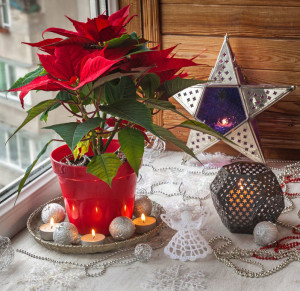 We may think of mainly using plant markers outside in the garden tucked among the lush leaves and blossoms that line a curving pebble path or in an organized herb garden, but plant markers also work very well in potted plants. Even though 100 percent stainless steel plant markers can weather any weather, they are just as beautiful and useful indoors.
We may think of mainly using plant markers outside in the garden tucked among the lush leaves and blossoms that line a curving pebble path or in an organized herb garden, but plant markers also work very well in potted plants. Even though 100 percent stainless steel plant markers can weather any weather, they are just as beautiful and useful indoors.
Houseplant names can be just as tricky to recall as their wild cousins outdoors, and visitors to your residence can enjoy your indoor plants just as well as your outdoor plants. Labeling your windowsill herb gardens can also help you when you need a pinch of this or that in your soups, stews and other dishes this winter. Plant markers both outdoors and indoors can help you and your visitors identify your plants.
Potted plants make indoor living spaces cozy and even help clean the air from some dust and pollutants with their health-enhancing leaves. Getting them off to a good start in their containers will ensure they have a healthier beginning and a longer healthier life in your home.
When you plant something in your yard you:
- Dig a hole
- Amend the soil with some fertilizer or nutrients (optional)
- Put your plant in and make sure the roots have room to grow
- Water your plant and get it ready to start its new life
Putting a plant in a container mixes these steps around a bit when you use purchased potting soil in containers:
- Put the soil in the container
- Water the soil
- Let the soil drain
- Place the plant in the pot
- Water the plant
- Fertilize the plant as needed
Watering the soil ends up in different steps when you are planting outdoors or indoors. Never put a plant in soaking soil. Muddy soil may have air pockets where the roots may not be able to make contact with the soil.
Some people believe that potting soil dries out too quickly. In order to best saturate your soil with water and keep it moist longer, Garden Mentors recommends using warm water over cold when preparing containers for planting. By watering the soil and then letting it drain before you put the plant in, you can also help your soil retain water more efficiently. Some gardeners will also mix their potting soil with a little soil from their yard to make it a little more dense and less powdery.
By starting your plants off with just the right nutrients and moisture in your soil, you’ll give them a good head start on life. We at Kincaid Plant Markers can help you identify your plants with stakes and labels that will last through the outdoor elements and won’t fade from the sun that shines through your window. Let us help you identify your plants in pots on or off the patio.
